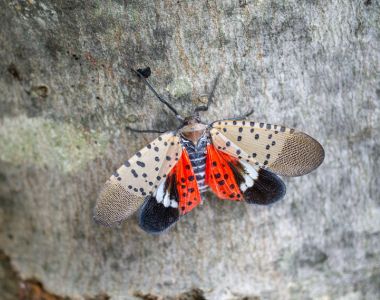Have you heard about the latest invasive species problem in Cleveland? Spotted lanternflies are invasive planthoppers that are originally from China and Southeast Asia. They were first spotted in the United States in 2014 and now have sizable populations in over a dozen states, including Ohio and newly here at Case Western Reserve University. They have no natural predators in the United States.

These pests have already caused hundreds of millions of dollars in damage to agricultural areas by feeding on plant sap, making the host plant far more vulnerable to disease. The Office of Energy and Sustainability and the Department of Biology at CWRU have teamed up to share important information on what faculty, staff and students should do if they spot the invasive insect.
To join the fight to stop the spread of these invasive bugs, if you see a lanternfly, take a picture of it if you can and then kill it. You can kill it by stepping on it or by catching it and then freezing it. It sounds harsh, but it is the No. 1 recommended action to take according to experts. Once the insect is dead, send a report to the Ohio Department of Natural Resources (ODNR) and include the location where it was found and a clear picture of the lanternfly; the picture is required.
If you find an egg mass on a tree trunk on campus, you should also report it to the ODNR and to our grounds department by emailing a picture and location to customerservice@case.edu. In your own yard, you should scrape the eggs off the tree, bag them securely and throw them in the trash.
An additional part of fighting this pest is to identify and take down Tree of Heaven, a non-native invasive tree that spreads rapidly and is known to harbor spotted lanternflies. Be sure to eliminate the Tree of Heaven in your own yards. The CWRU grounds team is working to take them down when they are spotted on campus.
